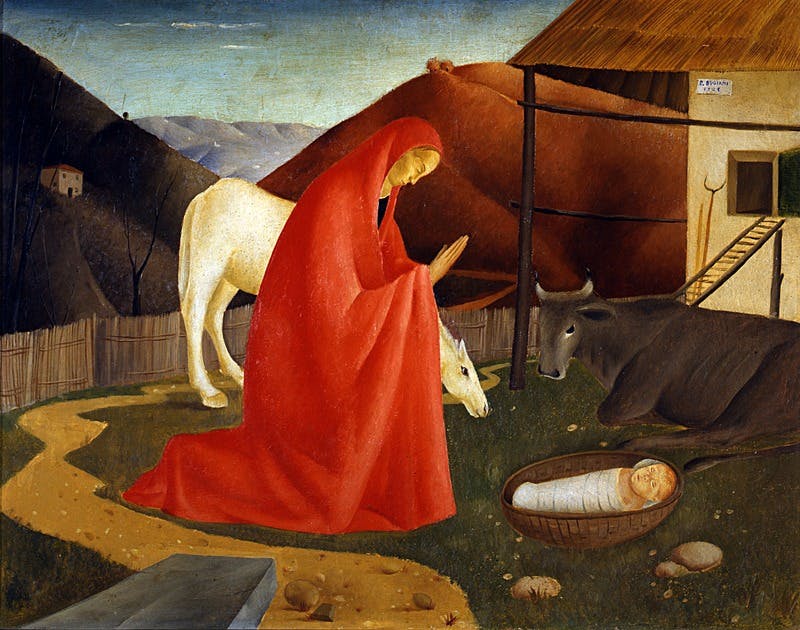Natività (La sera)
Pietro Bugiani (Pistoia 1905 - 1992)
In the 1920s, Pistoia experienced an intense artistic season thanks to a group of talented young people, who formed the group of the "Cenacolo". Having rejected the decorative stylistic elements of the local school of painting, they found in the architect Giovanni Michelucci a mentor who trained them in the exercise of drawing. One of these young people was Pietro Bugiani who, following Michelucci’s advice, began drawing on his frequentation of the Florentine art scene and the knowledge gained during fruitful stays in Turin, where he met Felice Casorati, and in Rome. Returning to Pistoia in 1927, the artist soon painted a group of crucial landscapes immersed in an enchanted atmosphere. His “Natività” is a holy version of this theme. The little hut and the farmhouse on the hill are in fact the same protagonists as those of the contemporary views of the Pistoian countryside, as well as the clear light which fades here in the twilight, underlining the emotion aroused by of the miracle of birth, both human and divine. The sparseness of the overall effect, which is contrasted by some meticulous attention to detail, shows Bugiani's compliance with the lesson of the ancients and in particular Giotto and Beato Angelico, within a vaster movement that aimed to recover the so-called primitives, headed by the magazine "Valori plastici", which had a particularly strong following in Tuscany. Indeed, from the very beginning, Natività was extremely popular: Giò Ponti reproduced it in "Domus" in 1929, praising the formal qualities and the clarity of the drawing in conjunction with Michelucci's ideas, and philosopher Lanza del Vasto and his friend, painter Giovanni Costetti, saw in it a close consonance with the values of spiritualism, of which they were the bearers. In fact, it was no coincidence that Natività became one of the leading works of the exhibition organised in 1931 at the Porza Gallery in Berlin by Lanza del Vasto, which exhibited works by a series of artists who shared the same pursuit of an interior art that aspired to higher values. "They acclaimed it as a revelation, as the new Beato Angelico", wrote Lanza del Vasto on that occasion, reporting the comments of the critics to the owner of the work, Camilla Roatta, whose father had bought it directly from Bugiani in 1929. Roatta herself sold it in 1986 to the Gallery of Modern Art in a moment of critical rediscovery of the so-called school of Pistoia, whose most prominent researchers were undoubtedly the artist and Marino Marini.
